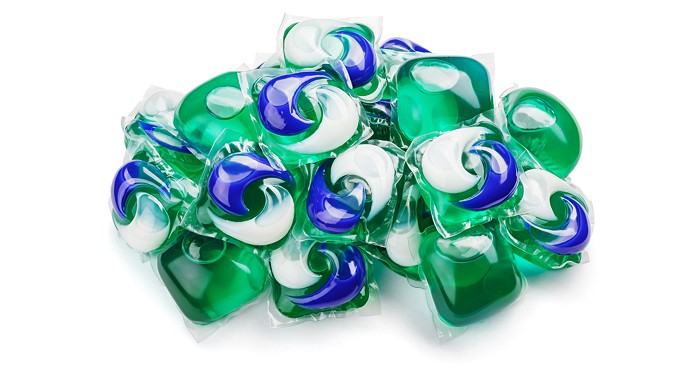Advertisement
Grab your lab coat. Let's get started
Welcome!
Welcome!
Create an account below to get 6 C&EN articles per month, receive newsletters and more - all free.
It seems this is your first time logging in online. Please enter the following information to continue.
As an ACS member you automatically get access to this site. All we need is few more details to create your reading experience.
Not you? Sign in with a different account.
Not you? Sign in with a different account.
ERROR 1
ERROR 1
ERROR 2
ERROR 2
ERROR 2
ERROR 2
ERROR 2
Password and Confirm password must match.
If you have an ACS member number, please enter it here so we can link this account to your membership. (optional)
ERROR 2
ACS values your privacy. By submitting your information, you are gaining access to C&EN and subscribing to our weekly newsletter. We use the information you provide to make your reading experience better, and we will never sell your data to third party members.
Regulation
Making Legal Marijuana Safe
ACS Meeting News: As legal cannabis spreads, chemists work on ways to tackle concerns for workers and consumers
by Jyllian Kemsley
April 20, 2015
| A version of this story appeared in
Volume 93, Issue 16
To turn cannabis plants (top) into marijuana concentrate (below), some companies are turning to supercritical CO2 extraction (concentrate shown in reactor, bottom right).

To turn cannabis plants (top) into marijuana concentrate (below), some companies are turning to supercritical CO2 extraction (concentrate shown in reactor, bottom right).
Where once the use of cannabis strains such as banana kush, Dr. Greenthumb’s ghost, and gorilla glue #4 was hidden behind closed doors, it is now increasingly in the open. Four states—Colorado, Washington, Alaska, and Oregon—have legalized both recreational and medicinal use, and another 19 allow medicinal use only. With that openness, however, come new challenges in the form of safety concerns and evolving regulations to protect production workers and consumers.
At the American Chemical Society national meeting in Denver last month, the Division of Chemical Health & Safety held a symposium to explore some of the issues, particularly those around extracting cannabinoids and other compounds from the plant material to yield concentrated oils and waxes used in vaporizers, foods, salves, or other products.
Glands on marijuana flower buds produce tetrahydrocannabinol (THC)—the specific compound that produces the “high”—as well as other cannabinoids. Individually or in concert, the compounds produce marijuana’s reputed medical effects, which include nausea control, pain relief, and seizure suppression. Buds also produce terpenes, which act as flavor compounds. Different cannabis strains have different compound profiles, making them suited for different products—and different markets. Recreational users may want a product high in THC, for example, while patients with epilepsy may look for something low in THC but high in cannabidiol (CBD). People using vaporizers may savor flavorful terpenes, while those putting marijuana into food may prefer to minimize terpene content.
Buds can be burned or otherwise heated to release the desired compounds, or they can be extracted using a solvent. Most commonly that solvent is butane or propane, although people also use various alcohols or hexane. Extraction to produce hash oil has in the past often meant just passing the solvent through the plant material, generating a lot of vapor—and a lot of fires, said industrial hygienist James Lieberman of THC Safety.
In Colorado, licensed extractors must now build closed-loop systems to recover the solvent, and systems must be inspected for safety by a certified industrial hygienist before use. When working with extractors, Lieberman typically places systems in hoods with enough ventilation to ensure that, in the event of a leak, vapor concentrations never exceed 25% of the lower explosive limit—the lowest concentration of a vapor in air capable of producing a flash of fire in the presence of an ignition source. He also makes sure that facilities have appropriate operating procedures and flammable storage.
The future of cannabis extraction, however, may lie in using carbon dioxide. The pressurized gas acts as a liquid for the extraction, then workers release the pressure to evaporate the CO2, which leaves behind the marijuana concentrate. Roughly the same process is used to decaffeinate coffee. CO2 still requires a closed-loop system and ventilation to ensure that a leak doesn’t result in worker asphyxiation, but the flammability concerns are gone and there are no residual solvents to remove from the product.
In a new venture, marijuana extractor Evolab has partnered with supercritical fluid chromatography company PIC Solution to develop new systems to optimize marijuana extraction. Their goal is to address issues specific to handling marijuana concentrates.
One big difference between these concentrates and other botanical products, said Evolab founder and Chief Executive Officer Alex Cahoj, is marijuana concentrate’s extremely high viscosity, which makes the product difficult to handle. Workers often end up laboriously scraping waxy material out of reactor vessels. Extractors can use solvents to get material out, but then they’re back in the situation of having to remove the solvent.
Another difference between marijuana and other botanicals is the variability. “If you’re extracting hops for beer or decaffeinating coffee, you’re really just targeting one end result,” Cahoj said. “But here, there are hundreds of compounds that might have value, and you’re figuring out what that value is and how to isolate the compounds and get them into the marketplace.”
Some of the difference between, for example, a high-THC/low-CBD and low-THC/high-CBD concentrate can be achieved by selecting different plant strains, Cahoj notes. But even then different plants may need different processing parameters to optimize their products. To address these issues, Cahoj now has two systems: one that’s set up more for research and analysis and one for production. His team can run a few grams at a time on the research system, coupling the extraction with CO2-based superfluid chromatography to determine the best processing conditions for the desired product. They can then transfer those conditions to the production system, which allows operators to divert different components into different reactor vessels and incorporates Teflon sleeves in the vessels for easy product removal. If necessary, they can also take the product back to the research instrument and further purify it using preparatory-scale columns.
“We’re transitioning to a lab culture,” Cahoj says. “We know very little about all of this but nobody else does either, and this is the type of equipment that’s going to teach us a lot.” Although his marijuana products can’t cross state lines, the extraction equipment and methods can, something that Cahoj hopes will lead to more standardization and ultimately improve product quality, consistency, and safety in the industry.
On the product safety side, Colorado currently requires marijuana producers to do third-party testing for cannabinoid concentration and homogeneity. The state is in the process of implementing tests for residual solvents and microbial contamination. Residual pesticides are likely next on the list.
Chromatography product company Restek has been working with the cannabis industry for about five years, said Rick Lake, a product manager at the company. He and his colleague Amanda Rigdon noted that although regulations are evolving for marijuana, organizations such as the International Conference on Harmonisation of Technical Requirements for Registration of Pharmaceuticals for Human Use and the U.S. Pharmacopeial Convention provide guidance for how to develop and certify analytical methods that can be applied to Cannabis.
On the basis of Restek’s experience, Lake said, the best approaches in terms of data quality and reliability are likely to be high-performance liquid chromatography (HPLC) to profile cannabinoids; LC-tandem mass spectrometry for residual pesticides; and headspace gas chromatography (GC), in which a sample is partitioned into the gas phase or evaporated completely before injection, to track terpenes and residual solvents. HPLC is preferred for cannabinoids, Lake said, because GC with a flame ionization detector can’t distinguish some compounds. But HPLC with an ultraviolet detector doesn’t have the specificity needed for terpenes, so GC is preferred for those compounds.
Residual pesticides are the most challenging contaminants to track because their concentrations may be as low as parts per billion or parts per trillion. Thus labs may need to turn to expensive tandem mass spectrometry, but even then there is a big hurdle to overcome, Rigdon said. In cannabis extracts, THC and CBD are typically present at percent (part per hundred) concentrations, and their peaks can obscure those of pesticides that might be present at much lower concentrations. Standard sample processing for pesticides does not remove the cannabinoids. “It’s going to affect both GC and LC, and right now I can’t see any way around it,” Rigdon said.
Despite the challenges, it is an exciting time for the industry, said Chloe Villano, president of Clover Leaf University, which focuses on worker training. “There are lots of opportunities for chemists who want to take the industry forward and push it to a new level.”







Join the conversation
Contact the reporter
Submit a Letter to the Editor for publication
Engage with us on Twitter